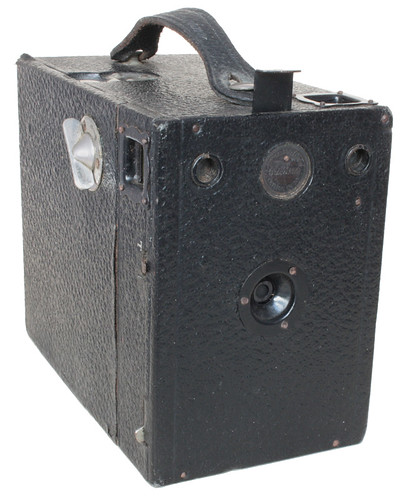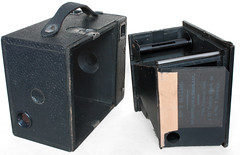Difference between revisions of "Butcher's Maxim"
m (image rights) |
(notes header) |
||
| Line 3: | Line 3: | ||
|image_source= http://www.flickr.com/photos/awcam/4215522077/in/pool-camerawiki/ | |image_source= http://www.flickr.com/photos/awcam/4215522077/in/pool-camerawiki/ | ||
|image=http://farm5.static.flickr.com/4044/4215522077_5d86a36792.jpg | |image=http://farm5.static.flickr.com/4044/4215522077_5d86a36792.jpg | ||
| − | |image_align= | + | |image_align= right |
|image_text= Maxim No.2 | |image_text= Maxim No.2 | ||
|image_by= AWCam | |image_by= AWCam | ||
| Line 22: | Line 22: | ||
|image_rights= with permission | |image_rights= with permission | ||
}} | }} | ||
| + | ==Notes== | ||
<references /> | <references /> | ||
Revision as of 22:04, 7 November 2011
This article is a stub. You can help Camera-wiki.org by expanding it.

|
| Maxim No.2 image by AWCam (Image rights) |
The Maxims were a range of basic box cameras made in England by W. Butcher & Sons Ltd. between c.1903 and 1920[1]. There were four sizes, No.1 for 6x6cm images, No.2 for 6x9, No.3 for 6.5x11 and No.4 for 8x11. The no.1 and 2 use "2¼ Ensign spool or No.2 Brownie" - now called 120 film.
A slider selects between three apertures, whilst the shutter has an instantaneous (I)/Time (T) selector.
Construction is mostly of wood, with a sheet metal side to the film carrier. The camera opens side-wise for loading; the film carrier slides out after pressing two catches, top and bottom, simultaneously. There is a hinged pressure plate mounted on the carrier which is pressed onto the film when the carrier is replaced.

|
| open for loading image by AWCam (Image rights) |